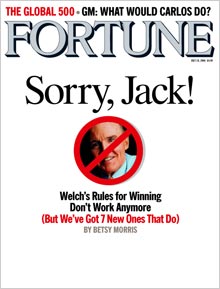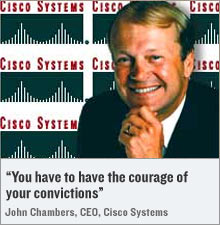|
New rule: Hire a courageous CEO. Old rule: Hire a charismatic CEO.
NEW YORK (Fortune) -- As big shareholders began to throw their weight around in the 1980s, boards sacked their CEOs and named dazzling replacements. And the celebrity CEO was born. The stars of that era were a varied crew: Jacques Nasser, Lou Gerstner, George Fisher, Michael Armstrong, Jack Welch, Ken Lay, Al Dunlap, Sandy Weill, Carly Fiorina. Some got more credit than they deserved, others more blame. A voracious business press helped burnish (or break) reputations.
|



